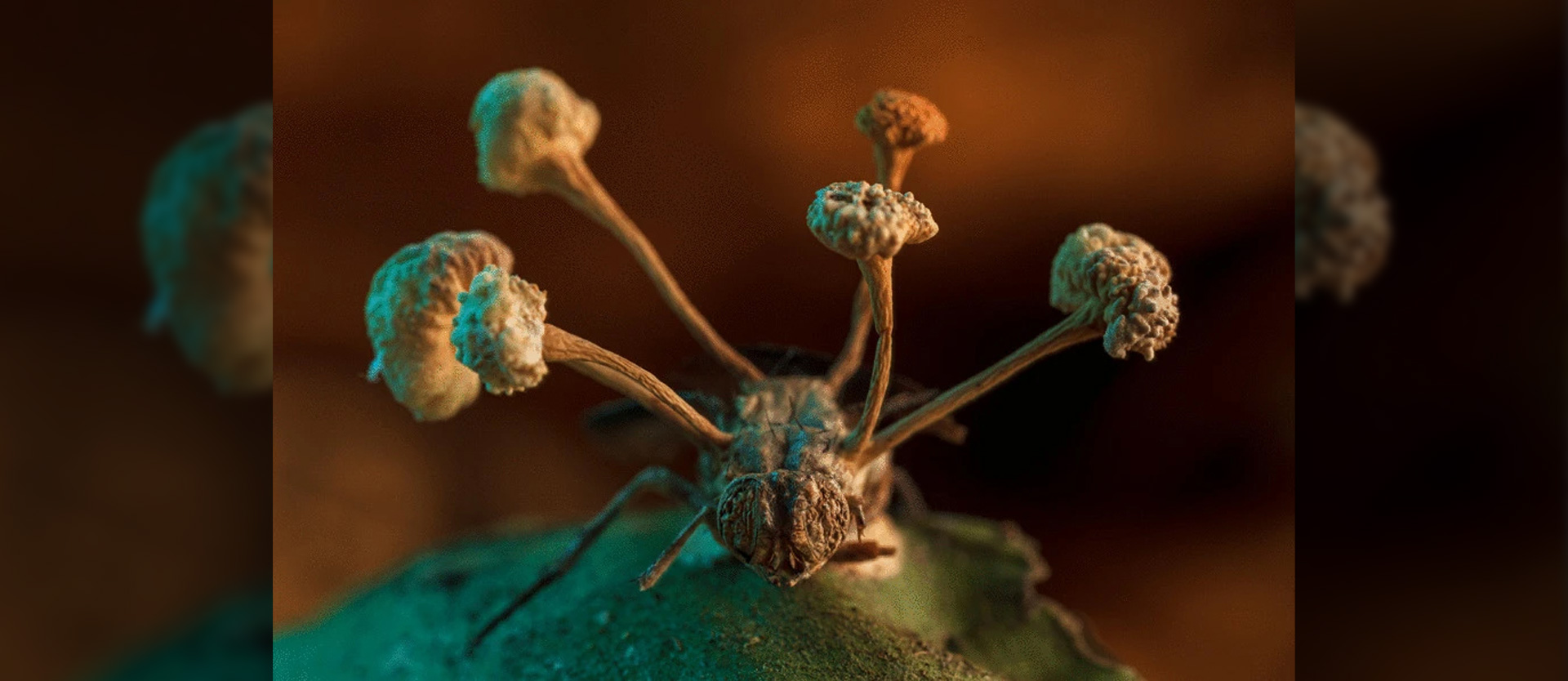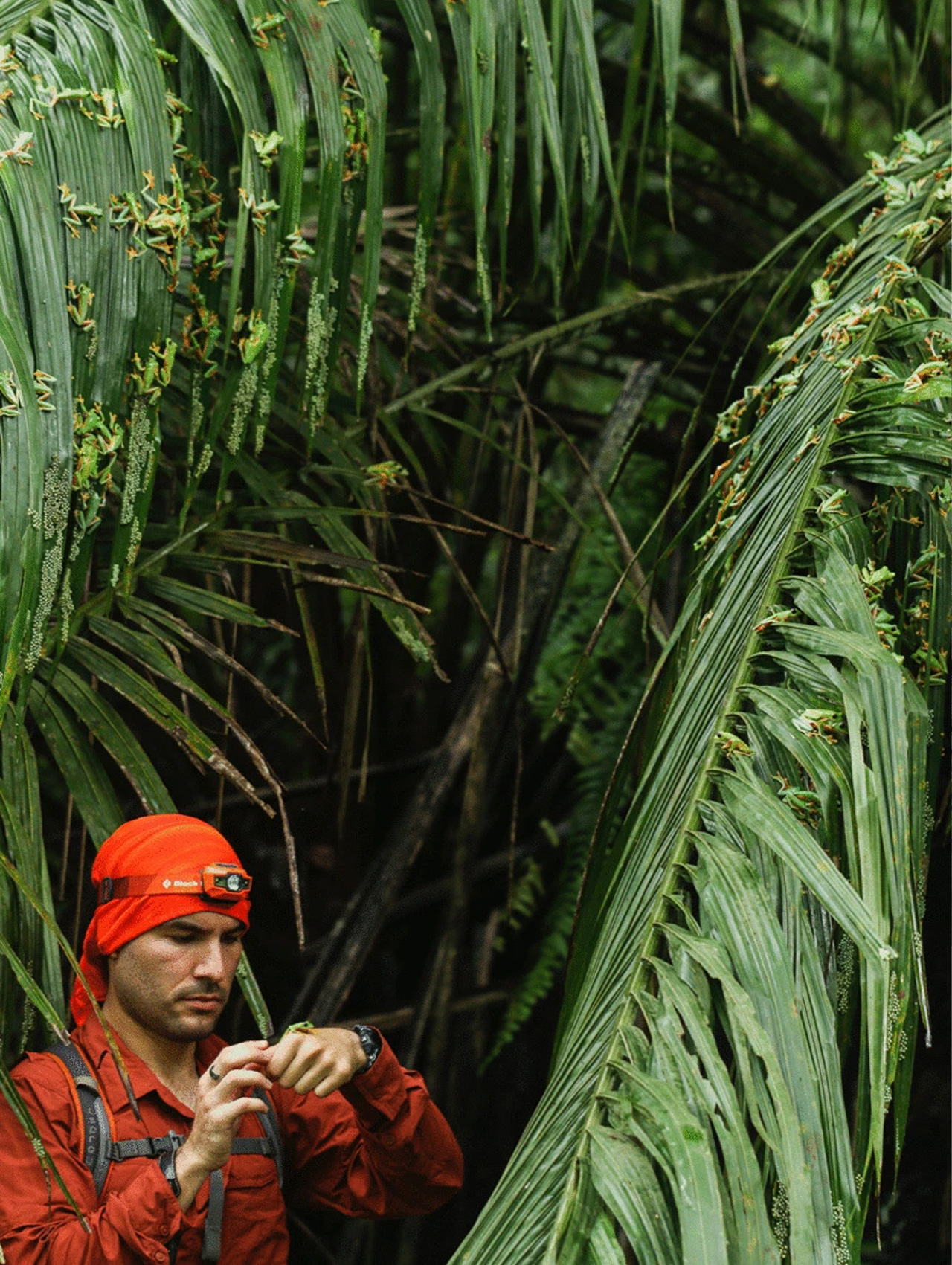
Mushroom controls zombie

Roberto García-Roa's photo won this year's competition of the scientific journal "BMC Ecology and Evolution". As in previous years, researchers from all over the world submitted a rich collection of images. They vividly depict the ecological challenges facing humanity.

Roberto García-Roa took his picture in the nature reserve of the Peruvian jungle of Tambopata.
Roberto García-Roa took his picture in the nature reserve of the Peruvian jungle of Tambopata. As he explains, "Spores of the so-called 'zombie' fungus (e.g., of the genus Ophiocordyceps) infect arthropods by infiltrating their exoskeleton and brain. This sounds like science fiction, but it is a reality in the animal kingdom. The infected insects migrate willy-nilly to the place where the fungus directs them. There they wait for death. Until then, the fungus feeds on its host and produces fruiting bodies full of spores. These are then shed to infect more victims."
The contest judges were immediately impressed with Roa's photo. Jury member Christy Anna Hipsley commented, "The image, simultaneously conveys life and death - a matter that transcends time, space and even species. The death of the fly gives life to the mushroom."
An image submitted by Brandon A. Güell was selected as a runner-up in the "Research in Action" category. Güell stands waist-deep in a pond in the tropical lowland rainforest on Costa Rica's Osa Peninsula, amid thousands of gliding tree frogs and their eggs laid on palm fronds. The biologist says, "The image is a reminder of the first explosive breeding event I observed and photographed as part of my dissertation. The behaviors that influence adult reproductive success have not been studied. The hatching of gliding tree frogs is an excellent example of high environmental adaptability. This is because embryos can hatch prematurely to escape predators, flooding, desiccation, and other threats to the eggs.
Original publication:
Harman, J., Hipsley, C.A., Jacobus, L.M. et al.
2022 BMC Ecology and Evolution image competition: the winning images.
BMC Ecol Evo 22, 99 (2022).
doi.org/10.1186/s12862-022-02049-y









